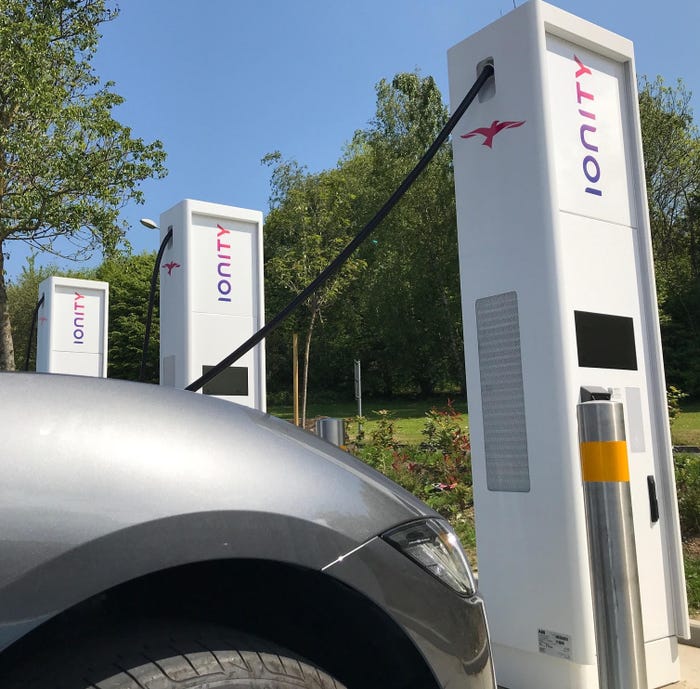BMW’s Iconic I-6 Evolves But Does Not Change
The toughest non-technical challenge was convincing people inside the company the single-turbo/Valvetronic concept was better than the N54's twin turbochargers.

The Ward’s 10 Best Engines competition has recognized outstanding powertrain development for 19 years. In this last installment of the 2013 Behind the 10 Best Engines series, WardsAuto looks at the development of BMW’s iconic 3.0L turbocharged I-6.
Among so many great automotive engines today, including nine sweethearts we’ve already featured this year, is there a more lovable and versatile 6-cyl. than BMW’s N55 3.0L? Available in a wide variety of BMW cars and CUVs, it pumps out 300 hp and 300 lb.-ft. (407 Nm) of torque, the latter from 1,200 through 5,000 rpm.
Its much-loved same-displacement twin-turbo N54 predecessor earned three straight Ward’s 10 Best Engines trophies, and the single twin-scroll turbo N55 is celebrating its third straight award. “What more do you need?” asks WardsAuto editor David Zoia. “This engine is near perfection.”
“It just pulls and pulls and has the best exhaust note in the business,” editor Byron Pope opined a year ago. “Let there be no doubt this is the best 6-cyl. on the market,” adds editor James Amend.
This higher-output version, as tested by WardsAuto editors in a ’13 BMW 135is, ups that ante to 320 ponies and 317 lb.-ft. (430 Nm) of twist. Good for 5-second 0-60-mph (97 km/h) bursts, it’s rated at 20/28 mpg (11.8-8.4 L/100 km) city/highway in the hot ’13 135is. And there is a more muscular version offering 332 lb.-ft. (450 Nm) in the flagship 7-Series sedans.
While its predecessor generated 300 hp with two turbochargers, the N55 puts out 20 hp more with better fuel efficiency at lower cost with a single twin-scroll unit. It boasts three key technologies: gasoline direct injection; BMW’s Valvetronic induction system, which continuously varies intake valve lift to manage fuel/air input, and therefore power, without a conventional throttle; and Double Vanos dual intake and exhaust cam phasing.
The twin-scroll turbo is smaller, lighter and less costly than the N54’s twin setup and has lower friction and near-zero lag. Its one exhaust stream feeds a single catalytic converter that heats up faster than the N54’s two catalysts, making for lower emissions during startup.
Beyond that, the most important differences are addition of the electric motor-driven Valvetronic system and a new fuel injection system using less-costly Bosch technology.
BMW is one of just two automakers today (the other is Volvo) using an inline 6-cyl. design for a car engine. All other automakers have switched to V-6s.
BMW still favors I-6s for their inherent balance and smoothness and also because they enjoy a packaging advantage when turbocharged. The best configuration for a turbocharged engine, the automaker argues, is to have the intake on one side of the engine and the exhaust manifold and turbocharger on the other. A “V” engine, by contrast, needs to pump air to both rows of cylinders, which is a more complex arrangement and needs more packaging space.
Another consideration is European pedestrian-protection rules, which require substantial clearance between the top of the engine and the inside of the vehicle’s hood. An I-6 is relatively tall, impinging some on crush space between the hood and engine hard points. But a turbocharged V-6 needs a lot of plumbing within its V.
On the other hand, the I-6 has just one cylinder head full of valve gear instead of two and two camshafts instead of four, and the I-6 has less mass and lower friction compared with a similar-displacement V-6.
In addition to output, fuel efficiency and customer-pleasing noise, vibration and harshness characteristics, the N55’s design priorities included excellent throttle response, near-zero turbo lag and high-rpm stability. And its engineers’ biggest challenge was integrating that BMW-first (and industry-exclusive) triumvirate of direct injection, Valvetronic and turbocharging exactly right.
Christian Bock, who is responsible for BMW’s “big-car” (5, 6 and 7 Series and X5) powertrains, tells WardsAuto the N55’s paramount objective was higher fuel efficiency.
Originally planned for low-volume sport models, the N54’s efficiency was not good enough to proliferate widely into higher-volume vehicles. The N55 today is BMW’s only engine with volume applications in every model line, either standard or available, from entry 1-Series to top-of-the-line 7 Series sedans and X1, X3 and X5 crossovers.
The team’s toughest non-technical challenge was convincing people inside the company that the single-turbo/Valvetronic concept was at least as good as, maybe better than, the N54’s twin turbochargers. Many at the time did not understand the potential of the twin-scroll replacement. “They said it would be too conventional, not a true BMW engine.” he says.
Is there room for future improvement? “We are working on its replacement,” Bock says. “It needs to satisfy not only our engineers’ wishes but also legislative issues, especially emissions and fuel efficiency.”
For example, he says the next level of particulate emissions will require new combustion technology.
“We will no longer be allowed to richen the mixture to cool the pistons and prevent detonation, so we will have to do more cooling with conventional measures, with water and air,” Bock says. “The intercooler system will be the key element.”
Another important change will be reducing the bore size and increasing the piston stroke for better efficiency.
But Bock says the bore spacing and BMW’s 0.5L cylinder displacement standard will not change. “The 1.5L 3-cyl. (debuting in the ’14 i8 electric car) is the first of this newest family of engines with those characteristics,” he says.
Beyond reducing pumping losses, refining the combustion process and replacing belt-driven accessories with electric ones, the most fertile frontier for efficiency improvement is friction reduction.
“It’s interesting how much potential is still there to reduce friction,” Bock says. “Diamond-coating surfaces such as piston rings, for example, and changing from conventional bearings to roller bearings.”
This adds cost, of course. “The borders always become smaller between functionality and cost,” he says, “and we need a long-term vision. Maybe we start with some cost penalty, but over time with volume, it will come down. Sometimes you have to invest in new technology, and 10 years later when it’s state-of-the-art, the cost has come down. And for BMW, investing in powertrain is ahead of some other priorities.”
Even as fuel-economy requirements continue to accelerate, BMW plans to meet them while maintaining performance and affordability.
“Twenty years ago, when I was responsible for advanced engineering, some said 140 grams/km of carbon dioxide was not possible. But we are below that level today. The next target, set by the European Union, will be 95 grams/km, which I think probably is achievable with technology. But it will be more and more costly, and I think there will be a point where it makes no sense to add more cost.”
Bock says electrification and hybridization also will help reduce fuel consumption, one reason why BMW is putting so much money into electric cars. “We know we can fulfill these requirements only if we have a certain mixture of combustion engines and electric power,” he says.
About the Author
You May Also Like



.jpg?width=700&auto=webp&quality=80&disable=upscale)